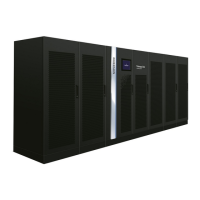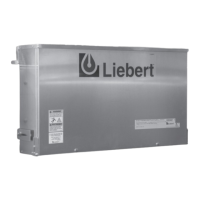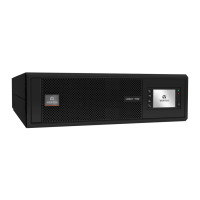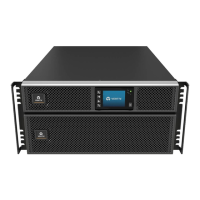9 TROUBLESHOOTING
WARNING! Risk of electric shock. Can cause equipment damage, injury or death. Open all local
and remote electric power supply disconnect switches and verify with a voltmeter that power is
off before working within any electric connection enclosures. Service and maintenance work
must be performed only by properly trained and qualified personnel and in accordance with
applicable regulations and manufacturers’ specifications. Opening or removing the covers to
any equipment may expose personnel to lethal voltages within the unit even when it is
apparently not operating and the input wiring is disconnected from the electrical source.
NOTICE
Risk of improper control circuits. Cancause equipment damage.
When using jumpers for troubleshooting, always remove jumpers when maintenance is complete. Jumpers left
connected could override controls and cause equipment damage.
Symptom Possible Cause Check or Remedy
Blower will not start
Nomainpower
Check L1, L2 andL3 for ratedvoltage.
Check Liebert®CWfor unitstatus(Stand-by, UnitOff, MonitoringOff or Remote Off).
Blownfuse or trippedcircuit
breaker (CB)
Check fusesorCBstomainfan.
Overloadstripped(mainpanel
onLiebert®CW)
Pushreset buttononmainfanoverload. Check amp. draw.
Nooutput voltage from
transformer
Check for 24VACbetweenP24-2 andP24-1. If no voltage, check primary voltage.
Control fuseblownorcircuit
breaker tripped
Check for 24VACbetweenP4-4andE1. If no voltage, check forshort. Replace fuse or reset
circuitbreaker.
Blower runsbut
controlswill not
operate
Relay R1 not makingcontact
(standardcontrolsonly)
Check for 24VACbetweenP36-9andP36-10. If voltage isnot present, R1 isnotreceiving
power.
Check airswitch. JumperP36-4toP36-7 If R1 closes, airswitchisnot closing(check for
blowerrotation, loose wiringandpinchedtubing.)Removejumper.
Check for 24VACat R1 coil. If the voltage ispresent andR1 isnot pulling, replace R1.
Table 10.1 Blower troubleshooting
9 Troubleshooting
77

